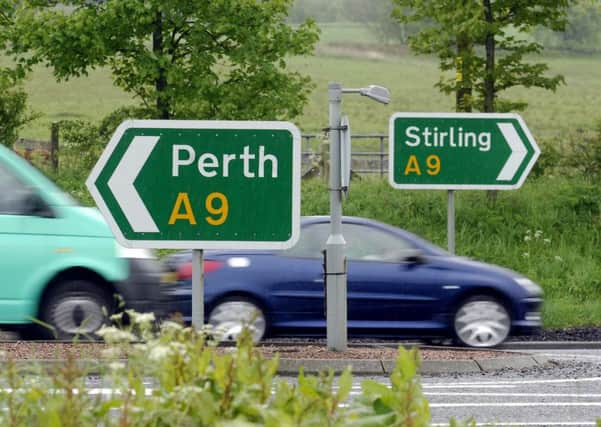Alastair Dalton: Don't wait for dualling to improve A9


For drivers on the A9 between Perth and Inverness, it’s the calm before the storm.
Motorists have now become used to the route’s average speed cameras, and there’s far less evidence of heart-stopping overtaking manoeuvres that helped earn the road its notorious reputation.
Advertisement
Hide AdAdvertisement
Hide AdThe A9 is far more pleasant to drive on than before, unless you find being limited to 60mph on a single carriageway unacceptable and preferred driving far faster on stretches that are often empty.
However, in my experience, some drivers are still being reckless with speed, but in a very different way.
Pretty much everyone seems to have slowed down to comply with the cameras, sometimes erring on the side of caution for fear of being caught. That has led to some motorists pulling out at junctions in front of other drivers, forcing them to brake, and then sitting at 5-10mph below the limit.
What’s worse, these same drivers go on to ignore lower limits, such as 40mph, through roadworks, as if they’ve set their cruise controls and pay no further attention to speed signs.
Those 40mph limits are the first indication of the “storm” to come, which has been described as the biggest transport project in Scotland’s history.
The Scottish Government’s Transport Scotland agency has already put signs up along the route to prepare drivers for what’s ahead - massive roadworks to complete the dual carriageway. But despite being approved after the SNP came to power nine years ago and huge sums being spent on preparatory work – £120 million on design alone – little construction has yet started.
The only part under way is a five-mile stretch south of Aviemore, due to be completed next year. Sections that were lined up for dualling under the previous Labour-Liberal Democrat administration are still on the drawing board.
There are now only another nine years to go until the intended 2025 completion date.
Advertisement
Hide AdAdvertisement
Hide AdBut the further 75 miles of dual carriageway, and the £3 billion still to be found to fund it, does suggest the project may end up taking longer.
The point is that much of the A9 may yet remain unchanged for some years to come, and that vision you may have of being able to motor along a smooth new dual carriageway to and from the Highlands is some way off.
That means that regardless of whether the scheme is delayed, there is a need for a greater focus on keeping the current road up to scratch.
It’s a trunk road on the spine of Scotland, which is used by huge numbers of visitors as well as residents and businesses heading north and south. But the poor state of the road in places belies its status, with potholes, and scoured and uneven surfaces, making for unsettling and unpleasant driving.
Some sections have been resurfaced in the last month, but adjacent stretches have been left for another day, to minimise disruption, I’m told.
I think drivers would put up with more inconvenience to get the job done properly.
We also need to start thinking now how the A9 will be maintained in the future. The completed dualling is likely to generate more traffic and greater wear and tear. The finished product should be as emblematic of Scotland in quality as ministers have sought for other major transport improvements, such as the Caledonian Sleeper, which will run beside it.